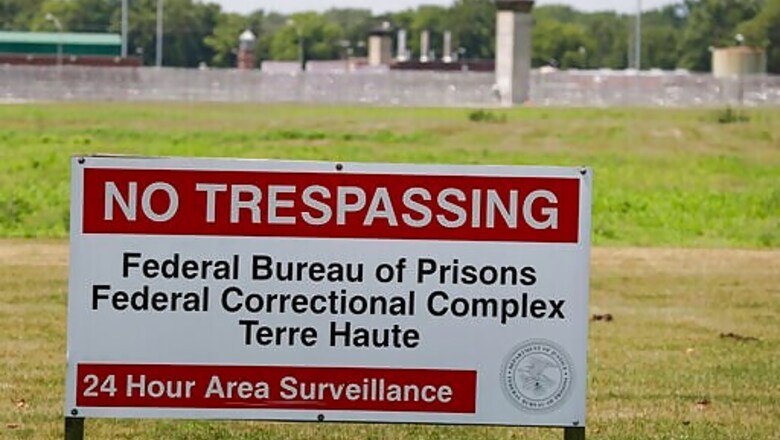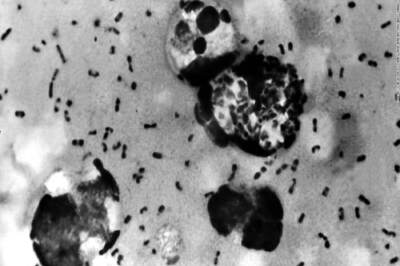
views
TERRE HAUTE, Ind.: The scheduled federal execution of a 10-year-old Kansas girl’s killer was back on track Friday after an appellate panel tossed a lower court’s ruling that would have required the government to get a drug prescription before it could use pentobarbital to kill the inmate.
Questions about whether pentobarbital causes pain prior to death has been a focus of last-minute appeals for Keith Nelson, who would be the fifth person to die this year and the second this week in the Trump administrations resumption of federal executions after a 17-year hiatus. All the executions by lethal injection have been carried out at a federal prison in Terre Haute, Indiana.
If Nelson’s lawyer appeals to the U.S. Supreme Court on the prescription issue, the decision on whether Nelson lives or dies Friday could still come down to the high court. But similar moves to delay three other executions last month failed, with the high court ruling 5-4 to allow them to proceed.
Nelsons spiritual adviser, Sister Barbara Battista, told The Associated Press early Friday that she would be at Nelsons side inside the death chamber if the execution goes ahead.
She spoke to the 45-year-old Nelson regularly since last month, and last talked to him by phone Wednesday, saying he sounded more subdued than usual but not frightened.
His parting words were I dont want to see you on Friday but I probably will, she said. He would rather be alive after Friday. But he is facing the reality.
Nelson also told her that, as of Wednesday, he did not plan to make a last statement just before the lethal injection is administered.
A flurry of filings by Nelson’s legal team over several weeks zeroed in on pentobarbital, which depresses the central nervous system and, in high doses, eventually stops the heart.
In one filing in early August, Nelson’s attorneys cited an unofficial autopsy on one inmate executed last month, William Purkey, saying it indicated evidence of pulmonary edema in which the lungs fill with fluid and causes a painful sensation akin to drowning.
In her now-overturned ruling, U.S. District Judge Tanya Chutkan halted Nelson’s execution early Thursday, saying laws regulating drugs require the prescriptions, even for executions. Within hours a panel at the U.S. Court of Appeals for the District of Columbia Circuit threw out Chutkan’s order with little explanation.
Nelsons crime was horrific by any measure.
Then in his mid-20s, Nelson grabbed 10-year-old Pamela Butler off the street and threw her into his truck in broad daylight on Oct. 12, 1999. The fifth-grade student had been returning to her Kansas City, Kansas, home on inline skates after buying cookies at a store. As he drove off, he made a rude gesture to Butlers sister, who saw the attack and screamed.
Nelson, who didnt previously know Butler or her family, told a co-worker a month earlier he planned to find a female to kidnap, torture, rape and kill because he expected to go back to prison anyway on other charges, prosecutors said.
After raping Butler, Nelson strangled her with a wire, then dumped her body in a wooded area near a Missouri church.
In a 2018 ruling, the 8th U.S. Circuit Court of Appeals said Nelson showed no remorse during a sentencing hearing statement and instead blistered the district court and the victims family with a profanity laden tirade.
Butlers mother, Cherri West, hoped Nelsons execution would bring her some peace after living for decades with the torment of her daughters final hours.
To know that that was the last face that she saw on this earth … and having to know how scared she was and what he was doing to her, has literally eaten me up,”she said.
Battista, a nun at a Terre Haute-area convent and anti-death penalty activist, said Nelson is not the same man he was.
He committed a heinous crime, she said But he is a human being. And who among us would want to be judged by their worst decision?
With the execution Wednesday of Lezmond Mitchell the only Native American on federal death row the federal government under President Donald Trump registered more executions in 2020 than it had in the previous 56 years combined.
The executions of Nelson and Mitchell were scheduled for the same week as the Republican National Convention, where many Trump supporters sought to portray him as a law-and-order candidate.
Nelsons current attorneys said Nelson’s lawyers during the 2001 penalty phase of his case should have emphasized mitigating evidence, including that Nelson suffered brain damage as a newborn and was abused as a child.
During arguments, prosecutors pointed to Nelsons twin brother, saying he grew up in similarly difficult circumstances but had a good job and had done well.
Nelson lawyer Dale Baich, who intended to be a witness at the execution if it happens, said the world wouldnt be made safer by killing his client.
Having him spend the rest of his life in prison would accomplish the same goal, he said.
Government attorneys have defended the use of pentobarbital, disputing that Purkeys autopsy proved he suffered. They have also cited Supreme Court ruling precedent that an execution method isn’t necessarily cruel and unusual just because it causes some pain.
Pentobarbital has few medical uses for humans, though it is often used by veterinarians to euthanize animals.
Three federal executions in the early 2000s deployed a cocktail of three drugs: sodium thiopental, pancuronium bromide and potassium chloride.
But after makers of those drugs objected to their use in executions, states and the federal government scrambled for alternatives. Attorney General William Barr last year approved reworked execution protocols that called for using pentobarbital alone.
___
Salter reported from St. Louis. AP reporters Mike Balsamo and Jessica Gresko also contributed to this report.
Follow Michael Tarm on Twitter at http://twitter.com/mtarm
Disclaimer: This post has been auto-published from an agency feed without any modifications to the text and has not been reviewed by an editor




















Comments
0 comment